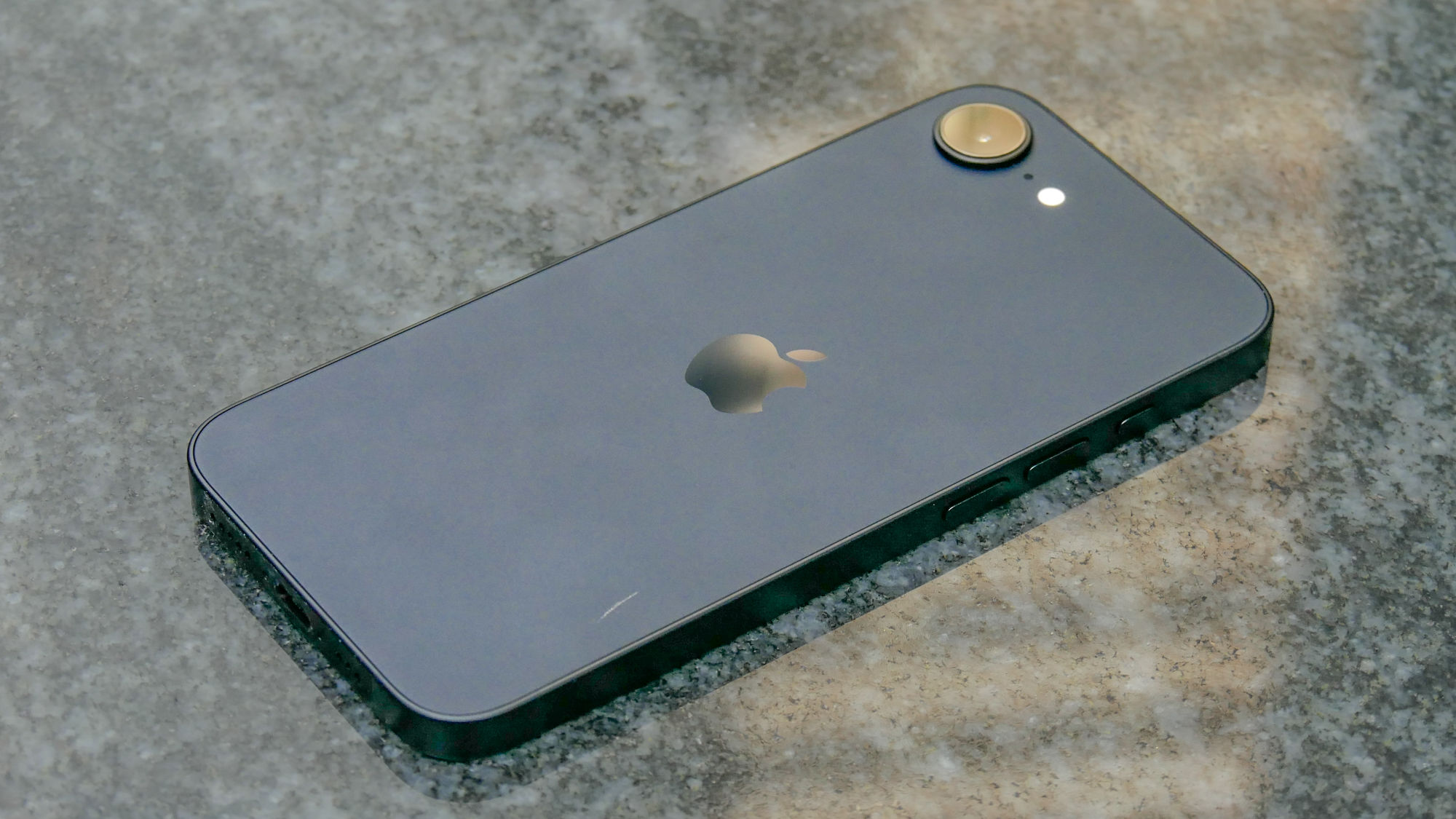iPhone 17 vs iPhone Air: Which new iPhone should you buy?
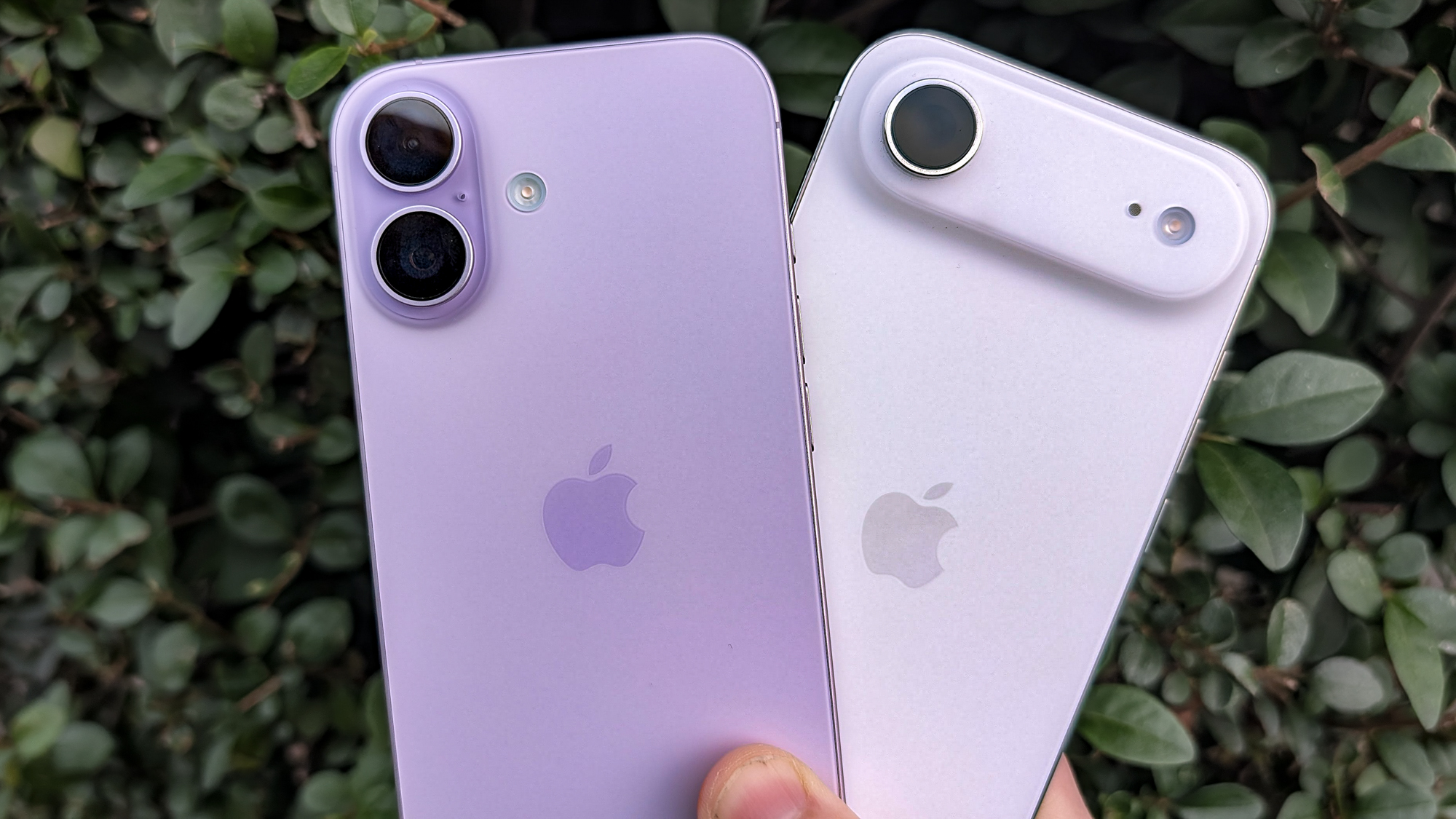
It can be difficult picking which specific iPhone model you want at the best of times. But that becomes even trickier when you're trying to compare models as different as the iPhone Air and iPhone 17.
The iPhone 17 has seen a surprising number of upgrades from its predecessor, putting it closer than ever before to the specs of the Pro models. But the entry-level iPhone still costs the same as the iPhone 16 before it, making it exceptional value.
On the other hand, there's the iPhone Air. This brand-new type of iPhone drops several features in return for a super-slim frame. Given that it costs $200 more than the iPhone 17, though, its value is harder to calculate.
But that's what we're here to help with. We're going to take you through all the key elements of the iPhone 17 and iPhone Air, and hopefully by the end, you'll know which of these phones is right for you.
iPhone Air vs. iPhone 17: Specs
| Row 0 - Cell 0 | iPhone Air | iPhone 17 |
Starting price | $999 / £999 / AU$1,799 | $799 / £799 / AU$1,399 |
Display | 6.5-inch OLED (2736 x 1260) | 6.3-inch OLED (2622 x 1206) |
Refresh rate | 120Hz adaptive | 120Hz adaptive |
Rear cameras | 48MP main (f/1.6) | 48MP main (f/1.6), 48MP ultrawide (f/2.2) |
Front cameras | 18MP (f/1.9) | 18MP (f/1.9) |
Chipset | A19 Pro | A19 |
Storage | 256GB, 512GB, 1TB | 256GB, 512GB |
Battery life | 12:02 | 12:47 |
Charging | 20W wired, 30W wireless (MagSafe) | 40W wired, 30W wireless (MagSafe) |
Operating system | iOS 26 | iOS 26 |
Water/dust resistance | IP68 | IP68 |
Size | 6.15 x 2.9 x 0.22 inches (156.2 x 74.7 x 5.64mm) | 5.89 x 2.81 x 0.31 inches (149.6 x 71.5 x 7.95 mm) |
Weight | 5.82 ounces (165 grams) | 6.24 ounces (177 grams) |
Colors | Space Black, Cloud White, Light Gold, Sky Blue | Lavender, Sage, Mist Blue, White, Black |
iPhone Air vs. iPhone 17: Price and availability
The iPhone Air and iPhone 17 launched simultaneously in September 2025, and can be bought from numerous stores and mobile carriers worldwide.
The difference emerges when we talk price. As Apple's entry-level flagship the iPhone 17 starts at the usual $799 mark. The iPhone Air begins instead at $999, closer in price to the $1,099 iPhone 17 Pro. But as we'll see by going through the rest of this comparison, that increased price relates mostly to the Air's thin design, as opposed to features that it may have above and beyond the regular iPhone 17.
The best iPhone 17 deals can help you get either device for less than their listed prices.
Get instant access to breaking news, the hottest reviews, great deals and helpful tips.
iPhone Air vs. iPhone 17: Design
It's actually quite easy to tell these two models apart, whether by sight or by feel.
Starting from the back, the iPhone 17 has a dual camera array set in the top left corner in a pill-shaped block. The iPhone Air has but a single camera, which sits in a raised "plateau" that spans the top edge of the phone.
Fittingly for its name, the iPhone Air is much thinner and lighter than the iPhone 17, measuring 0.22 inches thick and 5.82 ounces in weight compared to 0.31 inches and 6.24 ounces. That's despite the iPhone Air having a larger display, as we'll discuss in a moment.
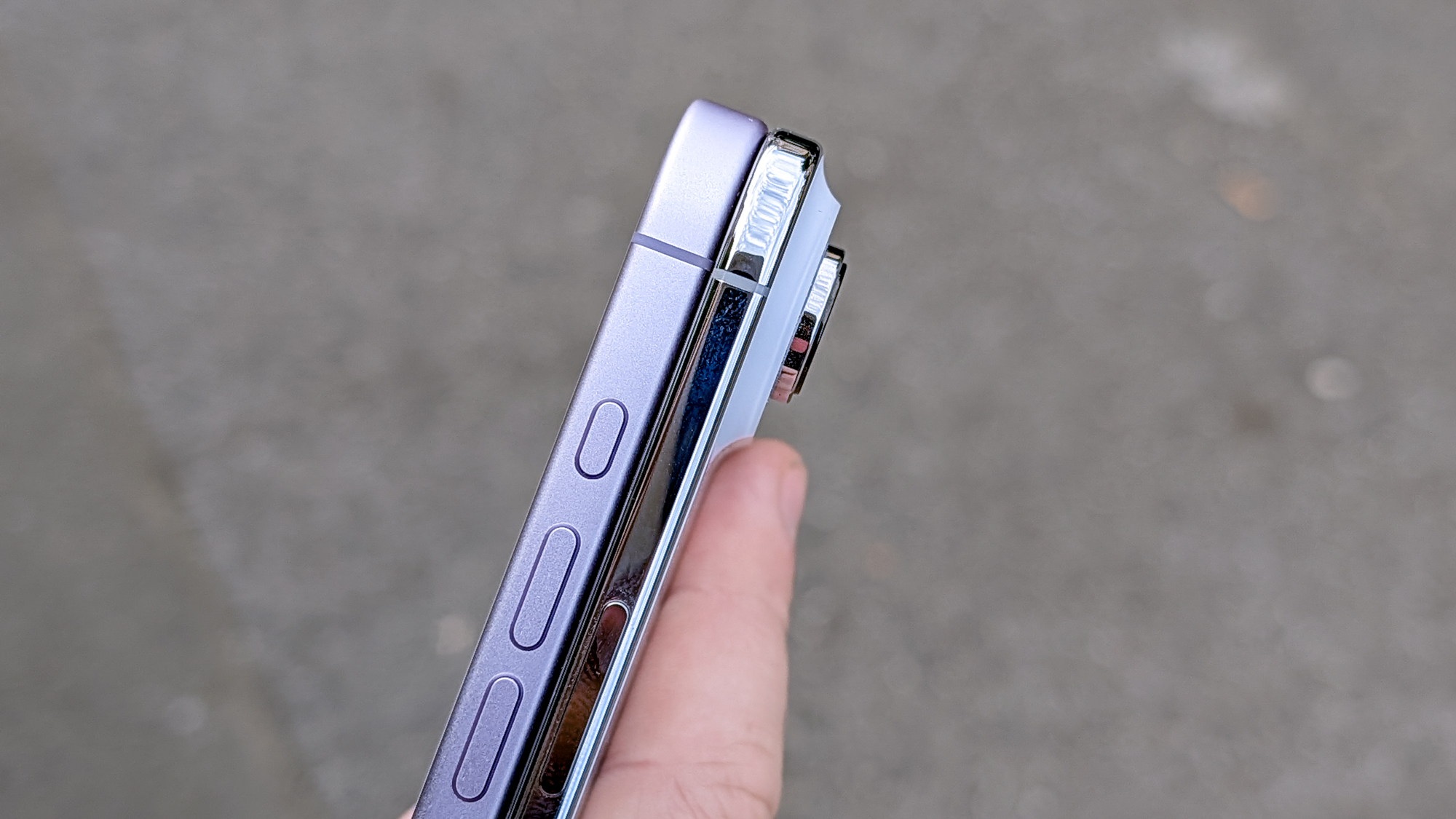
The other main visual difference is the available color sets for these two phones. Both phones offer versions of black and white, with the Air also coming in gold or light blue, and the iPhone featuring lavender, green and regular blue options.
iPhone Air vs. iPhone 17: Display
The difference between the iPhone 17 and iPhone Air's display isn't huge, but it is present all the same.
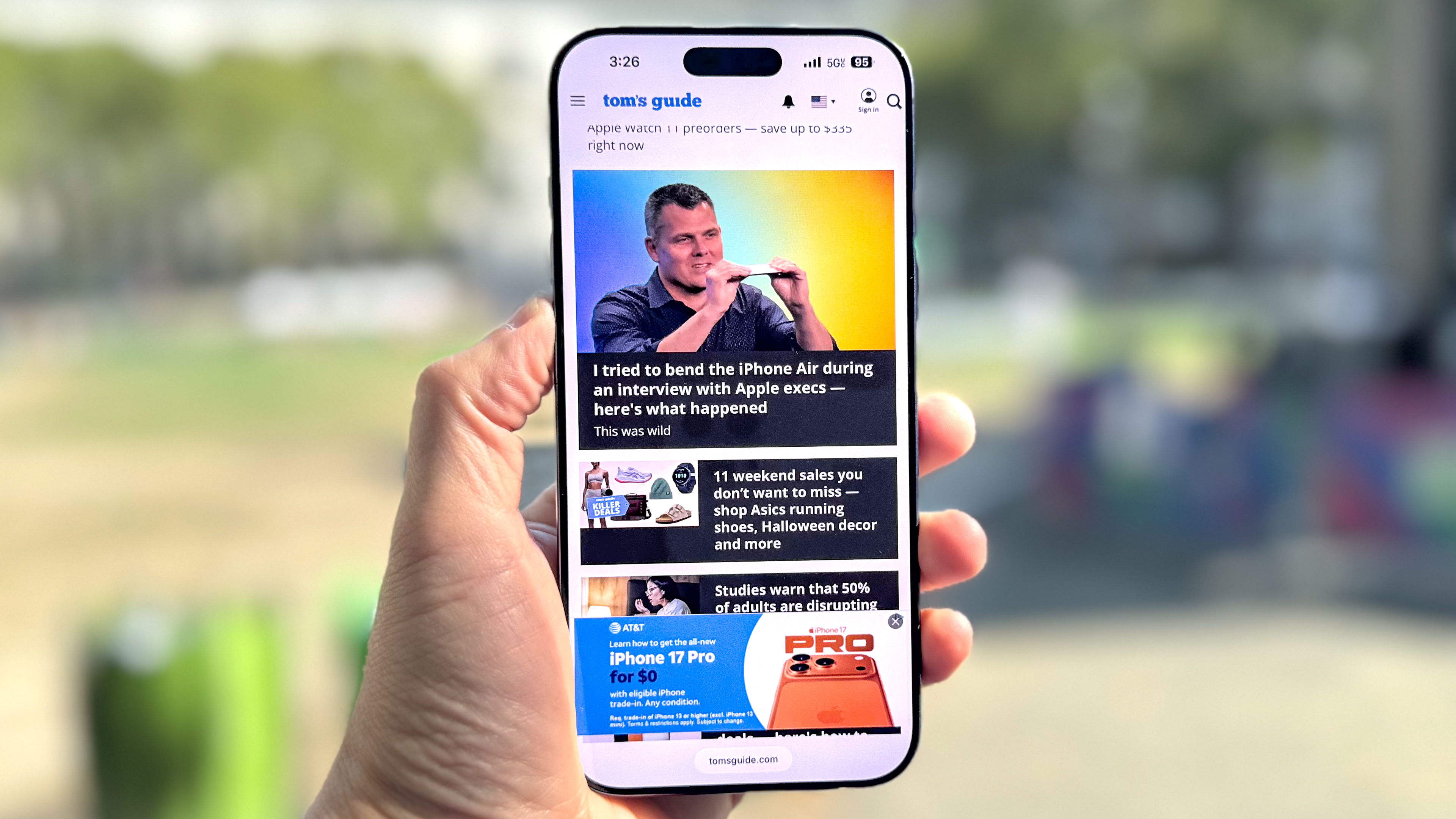
First off, the measurements: The iPhone 17 is a 6.3-inch phone, while the iPhone Air is a slightly more expansive 6.5 inches. Both use Apple's ProMotion adaptive refresh rate tech with a peak of 120Hz, and Ceramic Shield 2, a new screen material that increases durability and reduces glare.
| Row 0 - Cell 0 | iPhone Air | iPhone 17 |
Peak brightness (nits) | 1,678 | 1,505 |
sRGB color gamut coverage (%) | 111.1 | 111.3 |
DCI-P3 color gamut coverage (%) | 77.6 | 80.2 |
Delta-e color accuracy (lower is better) | 0.27 | 0.2 |
Our testing results revealed that the iPhone Air is slightly brighter than the iPhone 17, as you can tell from the figures above. But in return, the iPhone 17 does slightly better on color gamut coverage and color accuracy.
iPhone Air vs. iPhone 17: Cameras
The iPhone Air has exactly two cameras, and both are the same as what the iPhone 17 has — namely, a 48MP main camera and an 18MP "Center Stage" selfie camera. The iPhone 17 also boasts a 48MP ultrawide camera to help fit more into your shots.
Neither phone offers a dedicated telephoto lens, instead cropping in on shots captured by the main camera.
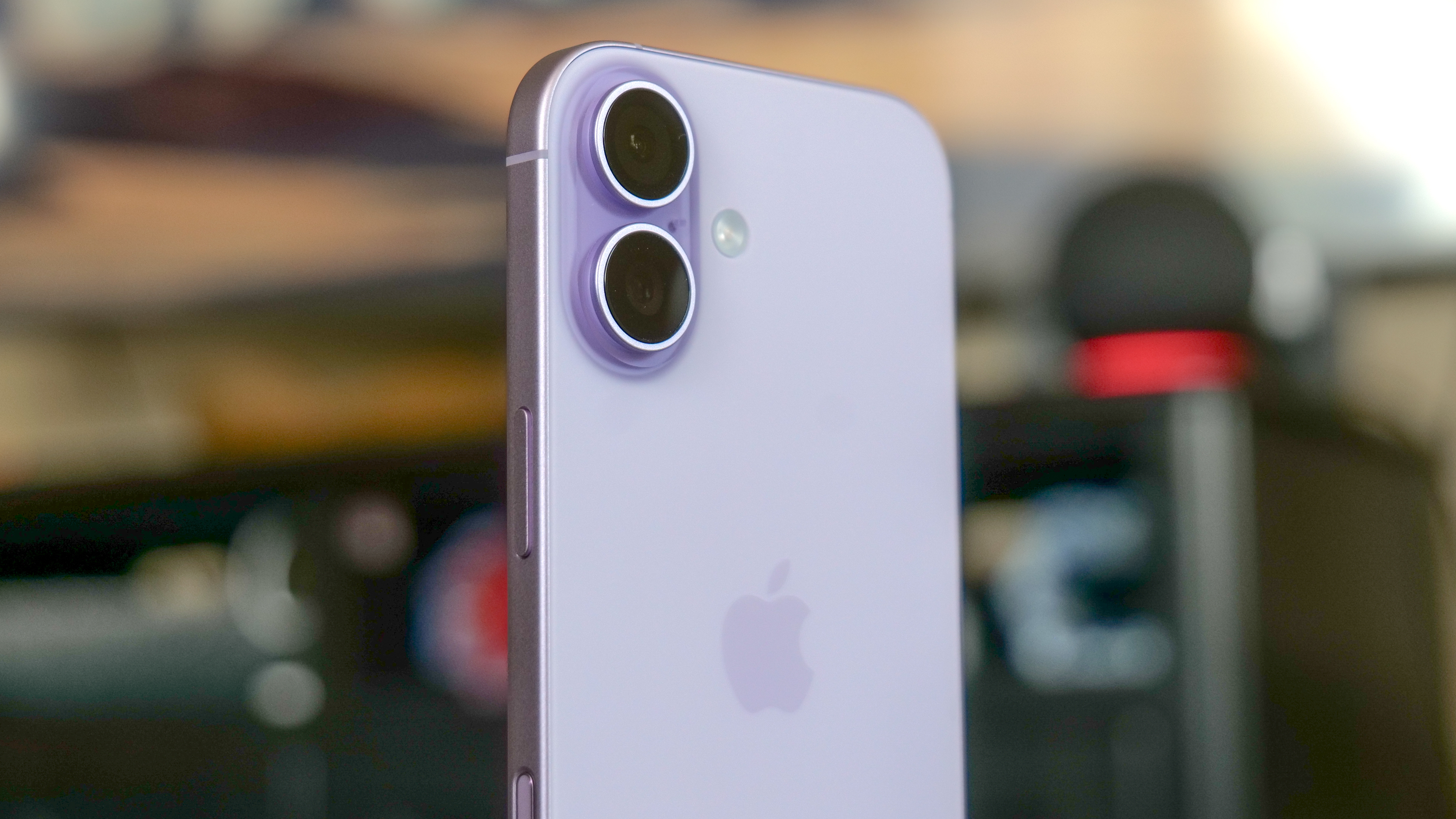
Even if the hardware's the same beyond the extra lens on the iPhone 17, there can still be differences in photo performance. That's why we took these two phones out for some real-world camera testing, starting with this shot across a park.
There's not much of a difference, but the iPhone 17's image has more intense colors in this instance. I feel the slightly drab-looking iPhone Air image is a more honest take on the scene in real life though.
Apple's 48MP main cameras are also capable of lossless 2x zoom shots at 12MP resolution, handy given the lack of a telephoto camera on either phone. The steeple of this church looks a little cooler in the iPhone 17's take on the shot, but detail-wise, there's no difference.
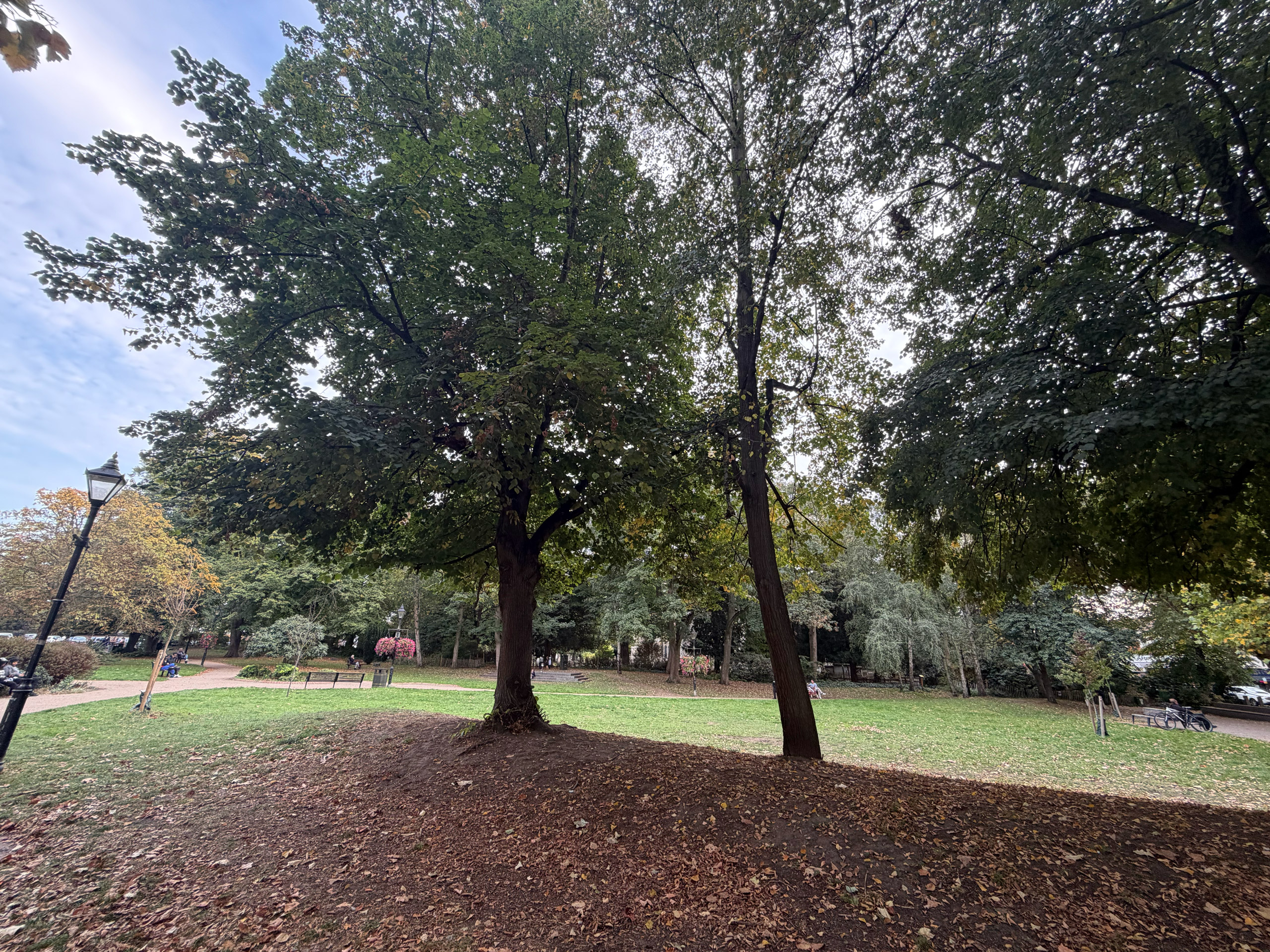
The iPhone 17's ultrawide camera can't be compared to any lens present on the iPhone Air. While you could capture most of this shot with the Air's main camera from where I was standing, the only way to fit in as much would be to walk backward, which isn't always possible or smart.
Lacking an ultrawide camera also means there's no macro mode for the iPhone Air to switch to when you need to get close to the action. You can overcome this somewhat with the 2x zoom mode, but when shooting at the same distance as the iPhone 17, this chestnut is a blur to the iPhone Air, while the iPhone 17 produces a nicely detailed image.
Lastly, a selfie camera comparison: This is the closest comparison we've had so far, with both phones showing me and the background off in almost identical colors. Interestingly, the iPhone 17 hasn't done as good a job of cutting around my glasses with its bokeh effect, though that could be down to a subtle difference in my head position rather than it being the phone's fault.
iPhone Air vs. iPhone 17: Performance
The iPhone 17 contains a new A19 chipset, but the iPhone Air uses the superior A19 Pro version of that silicon. That said, the A19 Pro inside the Air is missing the extra GPU core and the vapor chamber found in the A19 Pro-powered iPhone 17 Pro models.
That might explain some of our benchmark results, particularly when it comes to graphics testing.
| Row 0 - Cell 0 | iPhone Air | iPhone 17 |
Chipset | A19 | A19 Pro |
Geekbench 6 score (single-core / multi-core) | 3,723 / 9,665 | 3,701 / 9,460 |
3DMark Wild Life Extreme Unlimited (score / fps) | 3,696 / 22.13 | 4,899 / 29.3 |
Adobe Premiere Rush time to transcode (mins:secs) | 0:23 | 0:22 |
The iPhone Air does score a little higher on the Geekbench 6 CPU benchmark, but it's the iPhone 17 that wins on the 3DMark GPU benchmark and our video transcoding test. We suspect this is due to the iPhone Air's inferior thermals, which may cause throttling.
In terms of memory, both phones start with 256GB storage, and can be specced with 512GB storage if the user pays a little extra. The iPhone Air also has a 1TB version on offer.
iPhone Air vs. iPhone 17: Battery life and charging
In our battery tests of both of these phones, we were pleasantly surprised by how long they both managed to run. The iPhone Air lasted 12 hours and 2 minutes on our mobile data-based web-browing test, while the iPhone 17 managed 12 hours and 47 minutes — longer, but not significantly so.
For charging, the iPhone 17 offers a slightly speedier refuel than the iPhone Air, despite the Air having a smaller battery capacity to fill. Using an official Apple charger, the iPhone 17 reached 71% full after half an hour, while the iPhone Air only reached 55%.
iPhone Air vs. iPhone 17: Software and special features
These two iPhones, having launched at the same time, come with identical software. Both launched with iOS 26, and should receive an identical number of software updates, likely for the next five or so years.
Since both phone feature a variant of Apple's A19 chipset, they also support the same Apple Intelligence features, so you'll get the same AI tools on the iPhone 17 or the iPhone Air.
Both of these phones are compatible with a variety of accessories, but the iPhone Air gets a couple of unique ones. One is a bumper case, that protects only the sides of the phone to keep its profile as thin as possible. The other is Apple's new MagSafe battery pack, which doesn't fit on the back of other iPhones due to its shape. If you're concerned about battery life, this could be the ideal accompaniment to your iPhone Air purchase.
iPhone Air vs. iPhone 17: Verdict
Normally, the more you pay, the more you get with a smartphone. That’s not the case here, though.
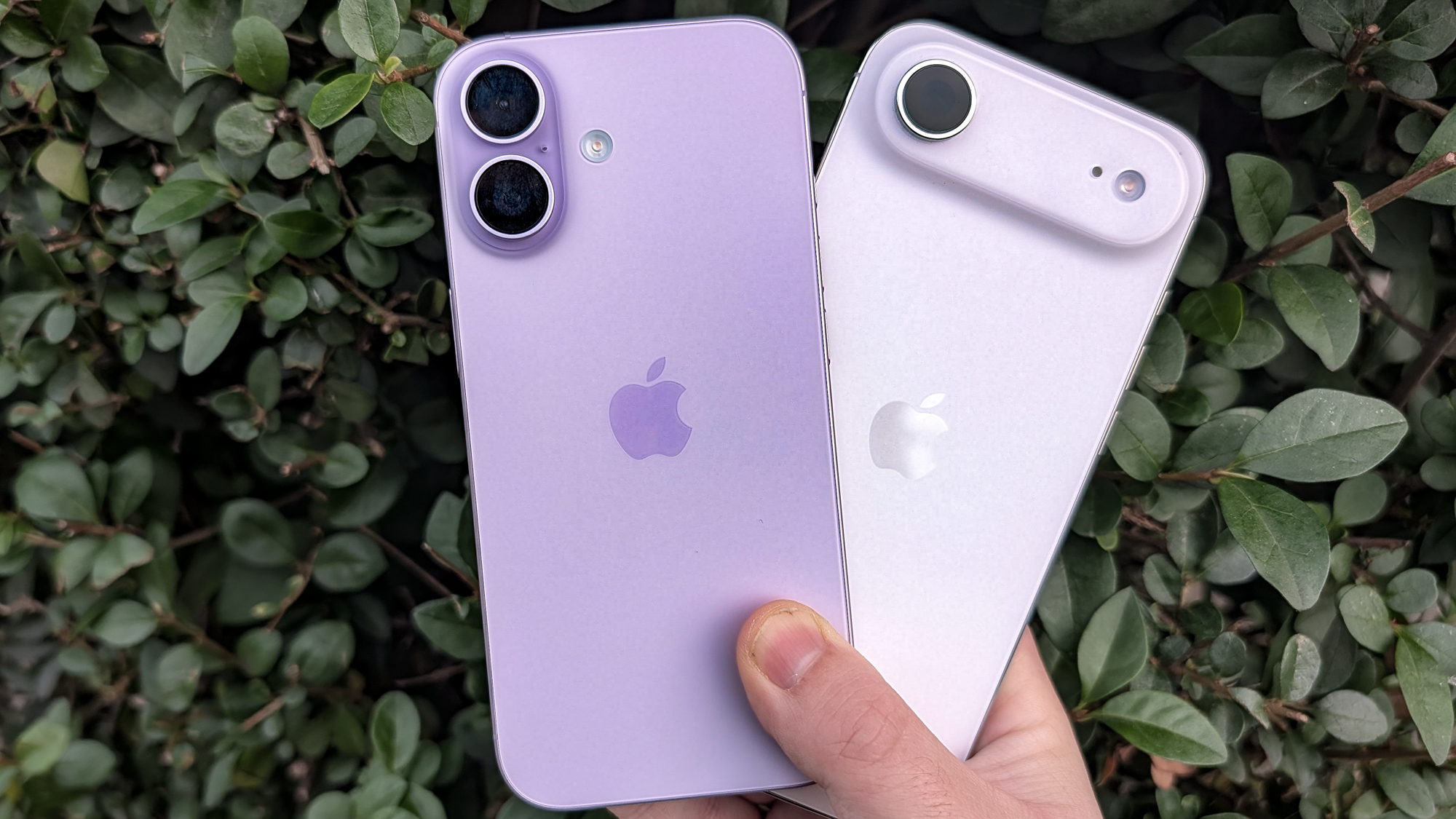
The iPhone 17 is the better-rounded phone of the two we’re looking at here. It has more cameras, a longer battery life, and costs less. But the iPhone Air has a design like no other iPhone yet made, while offering fairly similar performance numbers overall and a larger display.
If you're struggling to make up your mind, it's going to be a matter of deciding if a uniquely compact form factor matters more than the features you lose out on — which happen to be features available on every other new iPhone.
Follow Tom's Guide on Google News and add us as a preferred source to get our up-to-date news, analysis, and reviews in your feeds. Make sure to click the Follow button!
More from Tom's Guide

Richard is based in London, covering news, reviews and how-tos for phones, tablets, gaming, and whatever else people need advice on. Following on from his MA in Magazine Journalism at the University of Sheffield, he's also written for WIRED U.K., The Register and Creative Bloq. When not at work, he's likely thinking about how to brew the perfect cup of specialty coffee.
You must confirm your public display name before commenting
Please logout and then login again, you will then be prompted to enter your display name.
